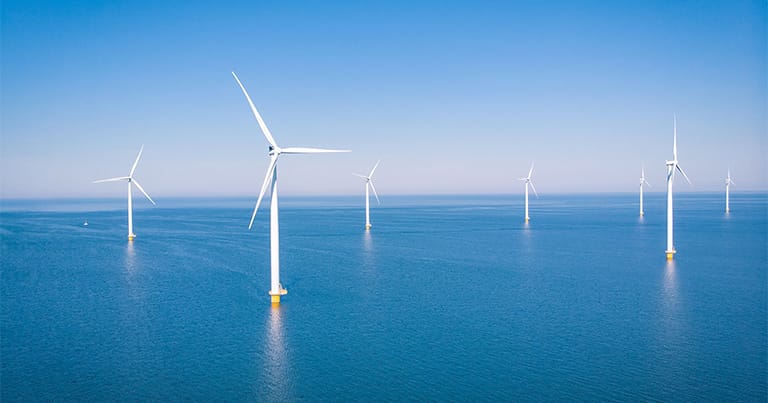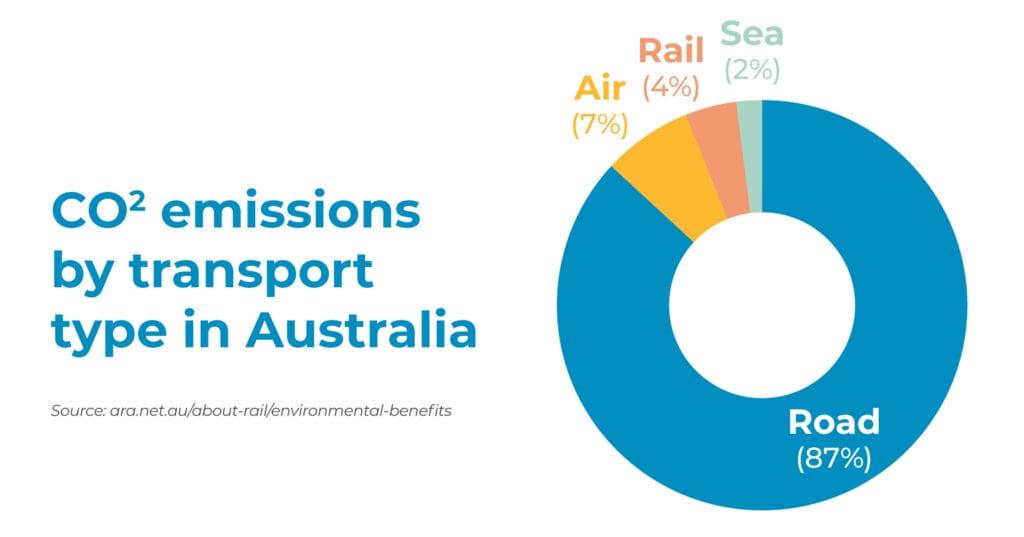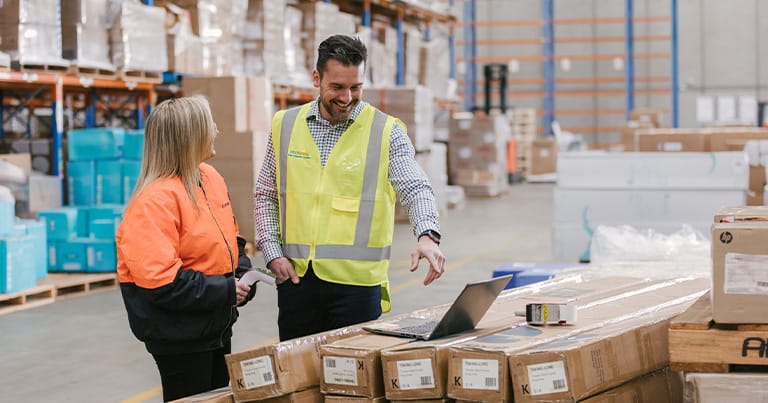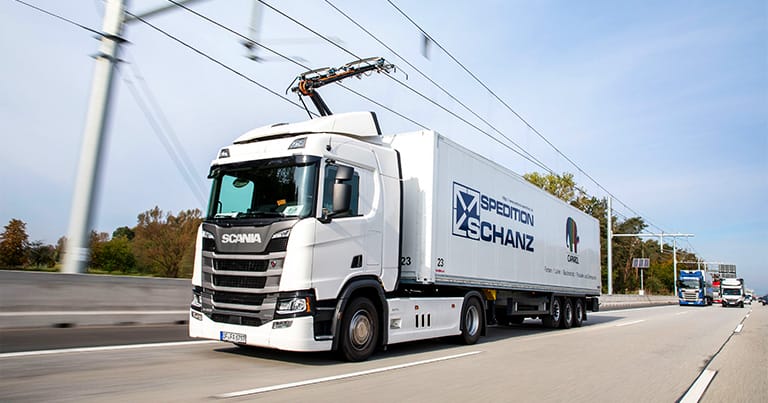When you think about corporate buzzwords of recent years, ‘sustainability’ has to be up there. There’s a lot of talk. But is there any meaningful progress being made towards net zero freight? Considering the amount of kilometres covered by vehicles in the name of freight, the sustainability discussion is one that needs to be had.
Whether it’s a genuine attempt to respond to growing climate concerns, or more of a token PR play, businesses want to be seen to be doing the right thing. Despite making minor strides towards transitioning to cleaner energy, Australia continues to lag behind. This is where the transport sector presents a great opportunity to make some inroads.
So, is carbon neutral shipping possible? Does the industry need to move beyond carbon offsetting? And where are there opportunities for greater impact?
CONTENTS
Is carbon neutral shipping actually possible?
Sustainability by transport type
Where are we at with carbon offsetting?
Sorting the good from the ‘greenwashing’
How freight efficiency can reduce carbon emissions
Is carbon neutral shipping actually possible?
Considering the sheer size and nature of the freight industry, carbon neutrality can seem like an uphill battle. Transport accounted for 18% of Australia’s greenhouse gas emissions in 2020 (Climate Change Authority, 2021). As of 2024, Australia has the fourth-worst carbon emissions per capita in the world – behind only Qatar, Norway, and Brunei (2024 Sustainable Development Report). Until recently, it was running dead last.
There’s a big push for sustainability, especially in the transport industry, where carbon emissions are front and centre and the environmental impact is high. As it stands, truly sustainable shipping solutions remain in their infancy.
Europe is probably setting the benchmark currently. This is due in part to extensive rail networks, along with wind energy infrastructure, and carbon pricing. With sea freight, for instance, 100% of emissions from vessels between EU ports are subject to a carbon price. While routes between EU and non-EU ports incur a carbon price on 50% of emissions. This kind of regulation is obviously an incentive to make routes as efficient as possible, while also driving more sustainable innovations to avoid these charges. EU ships are also required to cut their emissions over time, starting at 2% annually between 2025-2029, and increasing to 80% by 2050.
Meanwhile, German logistics company Schenker is making a strong push for electric vehicles (EVs). On the one hand, Europe’s combination of resources, infrastructure, economic alignment, and population density makes it better equipped than most regions to ‘go green’. But it acts as a useful test case for other regions, including Australia who still have a way to go.

Sustainability by transport type
Carbon emissions vary greatly depending on the type of transport used. Often, multiple modes of transport are required. And even within those categories, there may be key differences – such as standard trucks versus EVs.
Sea and rail are typically the least pollutive methods. Road is hard to avoid due to its agility – and only increasing in prevalence – especially to match the rising demands of last-mile delivery.
CO2 emissions by transport type in Australia

Despite moving 57% of national freight volume, the national rail network accounts for just 4% of the transport sector’s emission (Australasian Railway Association).
| Rail freight produces 16x LESS carbon pollution than road freight for every tonne kilometre travelled. Australasian Railway Association |
The reality is that while rail is a far lower polluter compared to road transport, it remains under-utilised. Australia still lacks high-speed rail infrastructure to adequately service its vast regions. It pops up in public discourse every few years as a political football, without ever gaining any meaningful traction.
In any case, the agility of road freight, along with the growing demands of last-mile delivery, have ensured that van drivers remain the biggest contributor to domestic freight (along with carbon emissions).
Where are we at with carbon offsetting?
Corporate sustainability often leads to talk of carbon offsetting. But how effective is it really? If a big company in the western world puts a small cut of their revenue towards various environmental programs, isn’t that a good thing?
Of course, any emissions reductions and incremental improvements are welcome. At this stage, however, according to the Climate Council, to avoid the worst impacts of harmful climate change, developed countries like Australia need to reduce emissions by 75% by 2030.
In theory, carbon offsetting is a positive step. And potentially better than nothing – in the sense that something positive, somewhere, is being done. Often, this takes the form of initiatives like reforestation, habitat conservation, developing renewable energy infrastructure, or upgrading carbon emitting facilities.
The issue is that offsetting has become the default, all-encompassing ‘solution’ for businesses to reduce their emissions. Once that box is ticked, they’re content not to take any active steps around their own supply chain processes. And offsetting alone – even taken at face value – can’t replace actual emissions reduction.
It also quickly becomes murky as to how effective or targeted these offsetting initiatives are. Why should a solar panel project in South America absolve a big corporate polluter based in Australia, for example? The accusation is that many offsetting programs are simply a way for the corporate world to launder their conscience, while appeasing potential customers and regulators. Carbon offsetting schemes appear to be, at worst, a grift; at best, far less effective than they purport to be.
| “These projects may take years to get going—let alone to reach their promised carbon reduction potential. No matter how rigorously vetted a program might be, you’re never literally negating the emissions associated with shopping online—even when companies that support these projects claim to make your purchase carbon neutral today. Carbon neutral shipping is a misnomer.” ‘Don’t be fooled by ‘carbon neutral’ shipping’ (New York Times, 2022) |
Sorting the good from the greenwashing
If outsourcing in the form of offsets isn’t the answer, the question then becomes ‘what direct action can businesses take to make their own practices more sustainable’? Or at the very least, more transparent.
Intent is at an all-time high when it comes to sustainability. That’s a good thing. And it’s not nothing. As a business, if you’re looking to introduce ‘sustainable shipping’ or net zero freight as a selling point, it’s important to be open about your own sustainability goals and capabilities. With consumers becoming more environmentally conscious, while also being inundated with ‘green’ messaging, clarity goes a long way.
The transition to EV courier fleets is ongoing, albeit slower than many would like. On a smaller scale, drones have recently been approved for delivering certain items in certain regions of Australia. However, the regulations remain very specific at this stage, limited to certain regions of Victoria, Queensland, and the ACT. But these case studies will be interesting to keep an eye on for potential wider roll-outs in the near future.
Suffice to say that meaningful, coordinated solutions to sustainability remain a little way off yet. And it’s difficult for all stakeholders to sift through the hype in the meantime. But the wheels are definitely starting to turn.
How freight efficiency can reduce carbon emissions
While sustainable solutions continue to be refined, there are simple steps you can take right now to reduce your freight footprint. With the right freight management platform, you can capitalise on efficiencies that not only save on costs, but also reduce the environmental impact of your shipping operations.
- Efficient routing
Using intuitive tech enables you to plan the most effective and efficient routes. You can customise the carrier mix to reduce emissions where possible – for example, including rail for a leg otherwise carried by road; or by sea for long distances instead of air, if speed isn’t essential. Freight brokers can coordinate this in terms of multi-carrier solutions, helping to reduce the number of trips required, along with fuel consumption and potential emissions. Senders can also look to favour EV carriers.

- Order consolidation
A freight management platform like MachShip helps to consolidate orders effortlessly. In short, when the same sender is shipping to the same location, using the same carrier, dispatched on the same day, MachShip will automatically consolidate those orders for you.
Instead of paying several base charges for multiple different consignments, you’ll only have the one. Naturally, the need for fewer journeys is more sustainable as well as cost-effective.
- Reduce packaging waste
A seemingly insignificant step is to reduce the amount of packaging where possible. This reduces the weight and/or size of a consignment, allowing carriers to use vehicle space more efficiently. Travelling lighter can save fuel consumption or allow for more order consolidation, meaning fewer journeys to transport the same amount of goods.
While it would barely make a difference for one-off shipments, these small margins add up over time to contribute to a much greener big picture.
Looking for more efficient shipping solutions? Get in touch.

